No One Gets Out Alive Movies Vs Book: Biggest Differences Explained
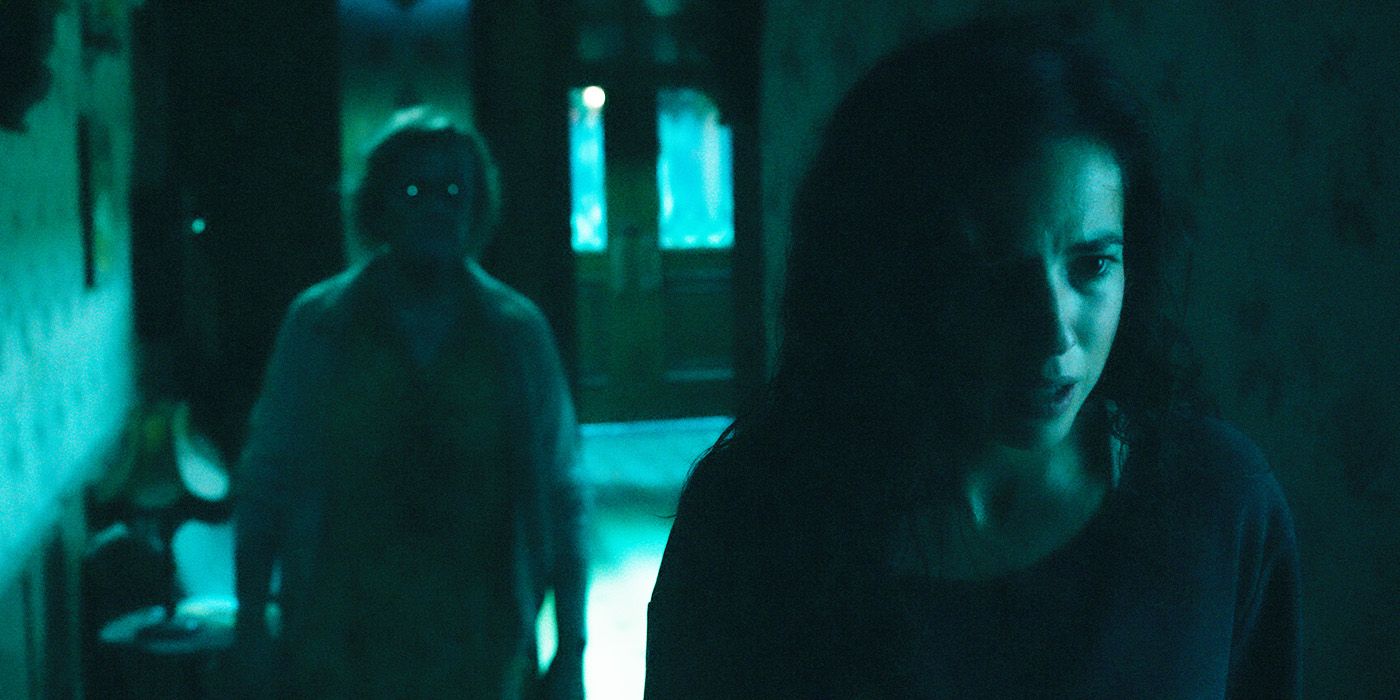
How does Netflix’s latest horror hit No One Gets Out Alive differ from the chilling 2014 novel it is adapted from? No One Gets Out Alive is Netflix’s latest foray into psychological horror. The creepy movie is based on The Ritual author Adam Nevill’s novel of the same name, which was a critical success upon its 2014 release.
However, No One Gets Out Alive changes a lot of major details from its source material, although the movie still stays true to the novel’s tone. The Netflix adaptation tells the tale of Ambar, an immigrant who arrives in America and is forced to settle in a run-down boarding house in Cleveland. She soon regrets her choice of emergency accommodation when seemingly supernatural spooks start haunting the house, but like the recent Giallo-inspired horror Malignant, No One Gets Out Alive gradually moves from being a standard ghost story into something far stranger.
This gradual tonal shift is something that No One Gets Out Alive has in common with its source novel, which confounded some critics by changing gear in its closing quarter and moving the story’s focus in an unexpected direction. However, despite both versions of No One Gets Out Alive featuring similar tones, plot points, and major characters, there are a lot of differences between the two texts. For one thing, the heroine of Nevill’s novel Stephanie Booth is not an immigrant, the book takes place in the UK rather than the US, and both the monsters and endings of the two diverge significantly from one another. Much like the movie adaptation of Bret Easton Ellis's American Psycho altered the ending to translate the story to cellu loid, No One Gets Out Alive also made some understandable, and some unexpected, changes to its source text for brevity's sake.
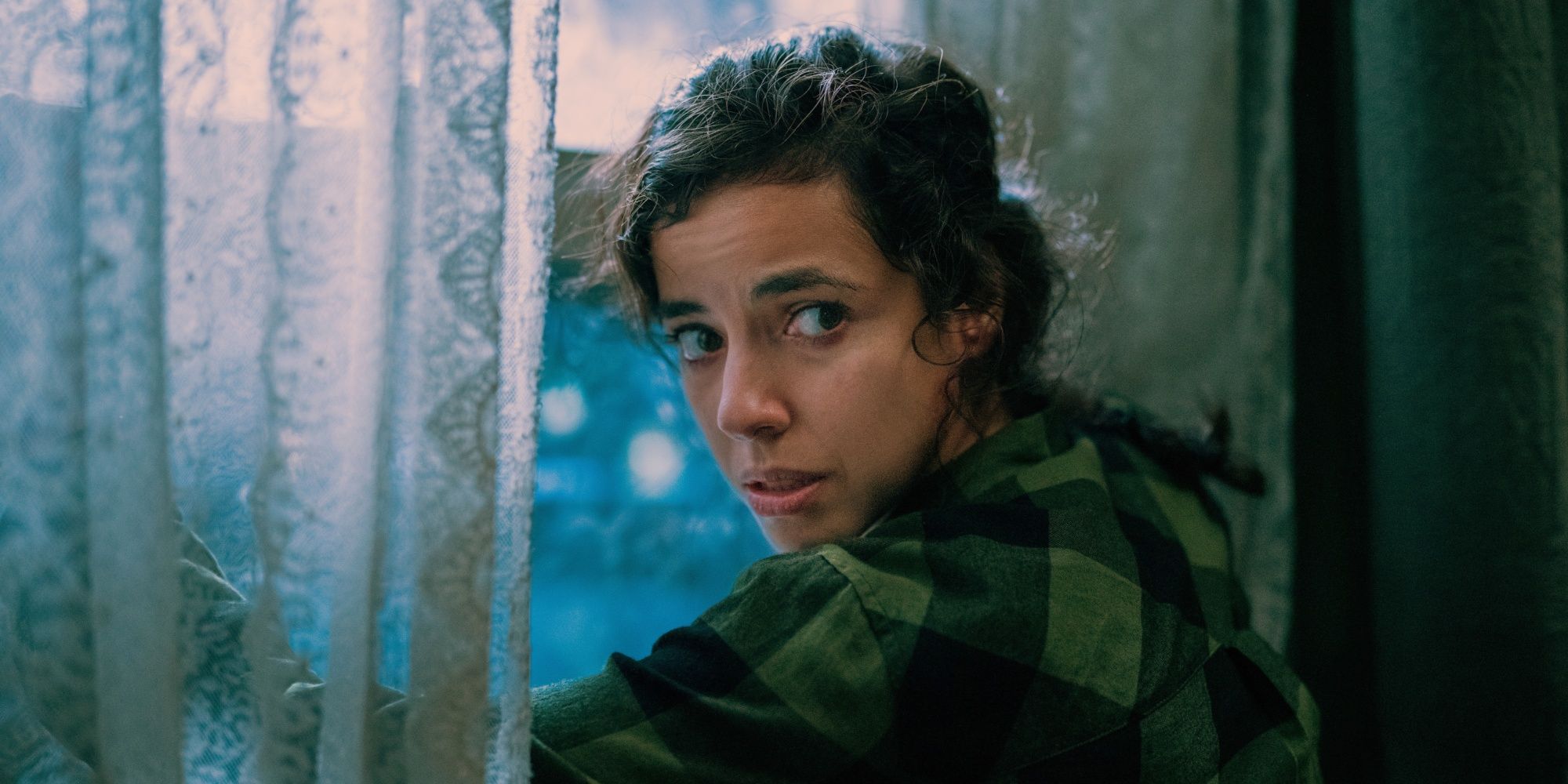
Nevill’s novel heroine Stephanie Booth faces hardship much like Ambar and is driven to stay in the creepy house by desperation, but the nature of her plight differs significantly. Ambar is an illegal immigrant whose options for housing are limited by her lack of an American ID, whereas Stephanie’s inability to afford a safer home stems from a lack of consistent, well-paid work and subsequent economic anxiety. Where Ambar stayed in her home country and eschewed college to care for her terminally ill mother, Stephanie left home because of an abusive alcoholic stepmother. Both the book and the movie use horror to address contemporary social issues à la Get Out and Parasite, but where Nevill’s book addresses working-class poverty in the UK, the Netflix movie transplants the story’s action to the US and makes the immigrant experience the plot’s most prevalent theme.
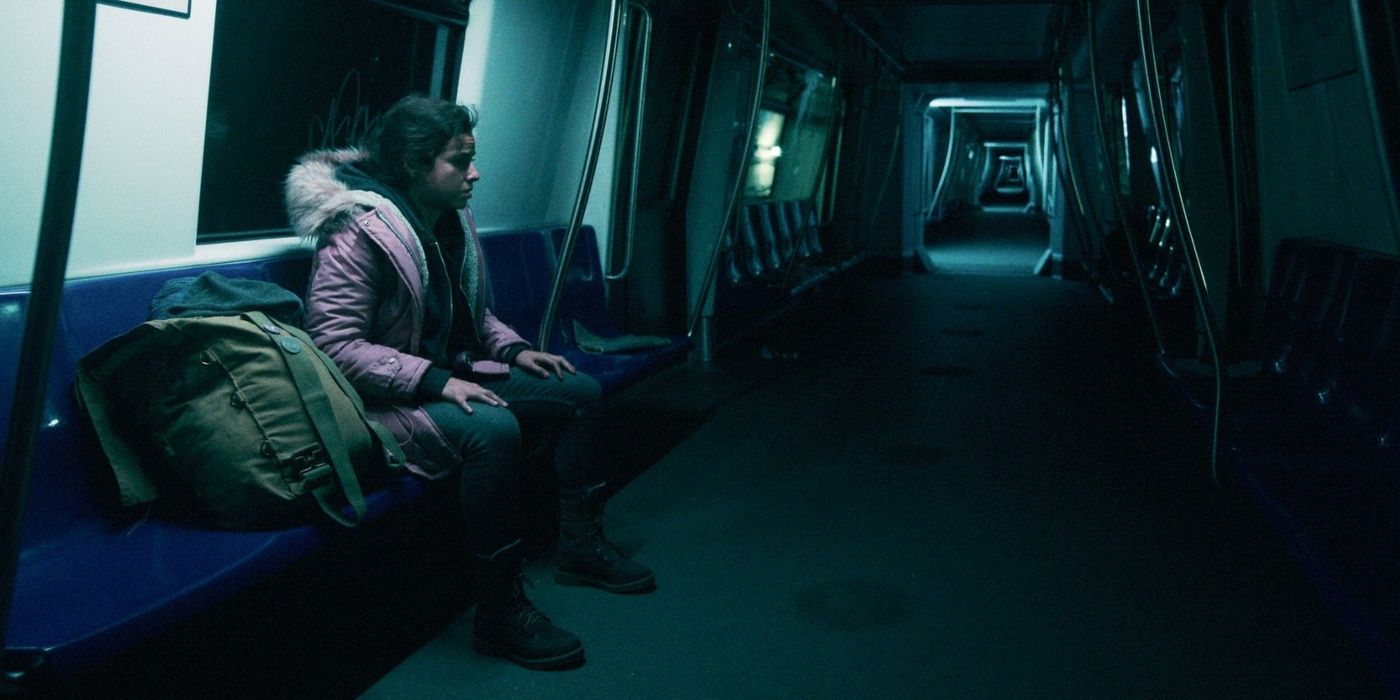
The novel No One Gets Out Alive is set in the Perry Barr neighborhood in Birmingham, while the movie version is set in Cleveland. Moving the action of the story from the UK to the US means that the movie version of No One Gets Out Alive offers more commentary on the experience of immigrants entering America, where the book focuses on the run-down housing conditions faced by working-class citizens in Britain. Much like the recent remake Candyman moved the action of Clive Barker’s original story from Liverpool to inner-city Chicago but maintained similar themes, both versions of No One Gets Out Alive still make it clear that the protagonist is stuck in her less than favorable living conditions due to her social class.
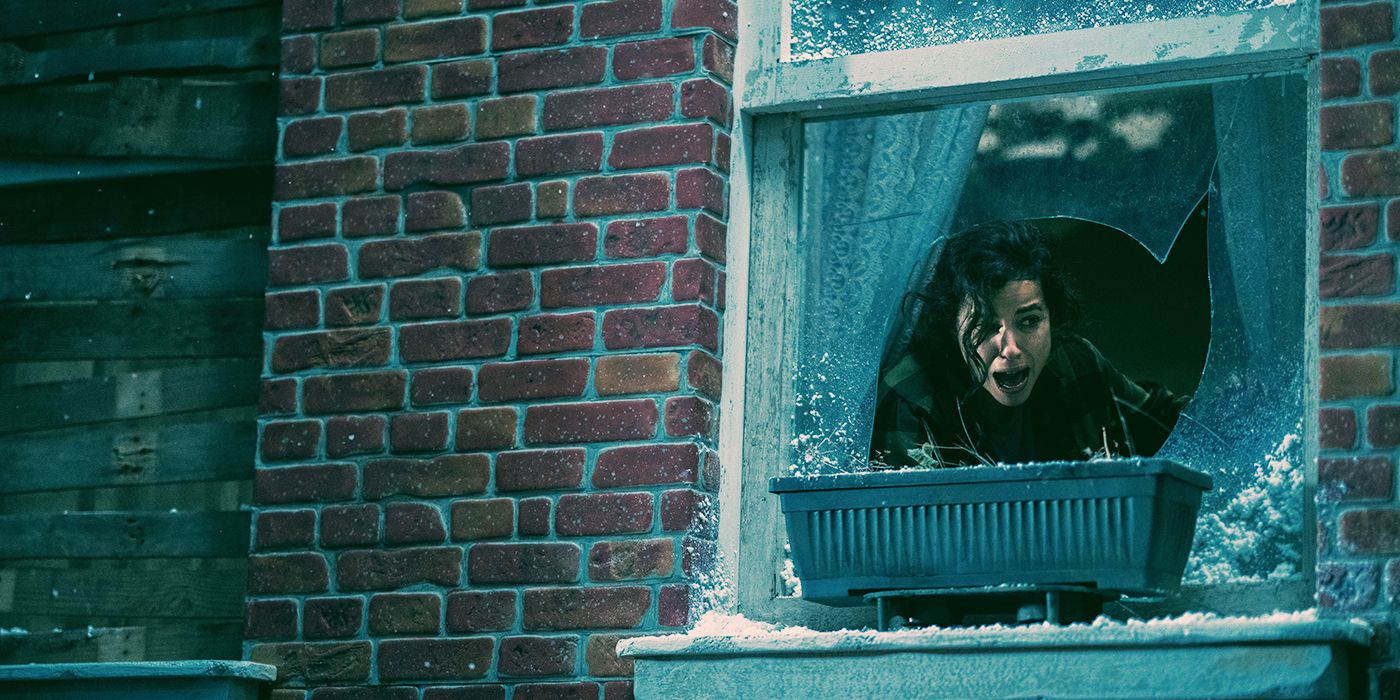
The movie version of No One Gets Out Alive has a comparatively easy time explaining why Ambar doesn’t alert family or friends to her plight as they live in another country, and she does get in touch with her only local relative Beto. In contrast, the novel sidesteps this issue by saying Stephanie cut off former friends before the book’s action began. However, the biggest difference between the movie and the novel’s plots comes in the form of the monster and the ending, which occurs about three-quarters of the way through Nevill’s No One Gets Out Alive but serves as the horror movie adaptation’s climax.
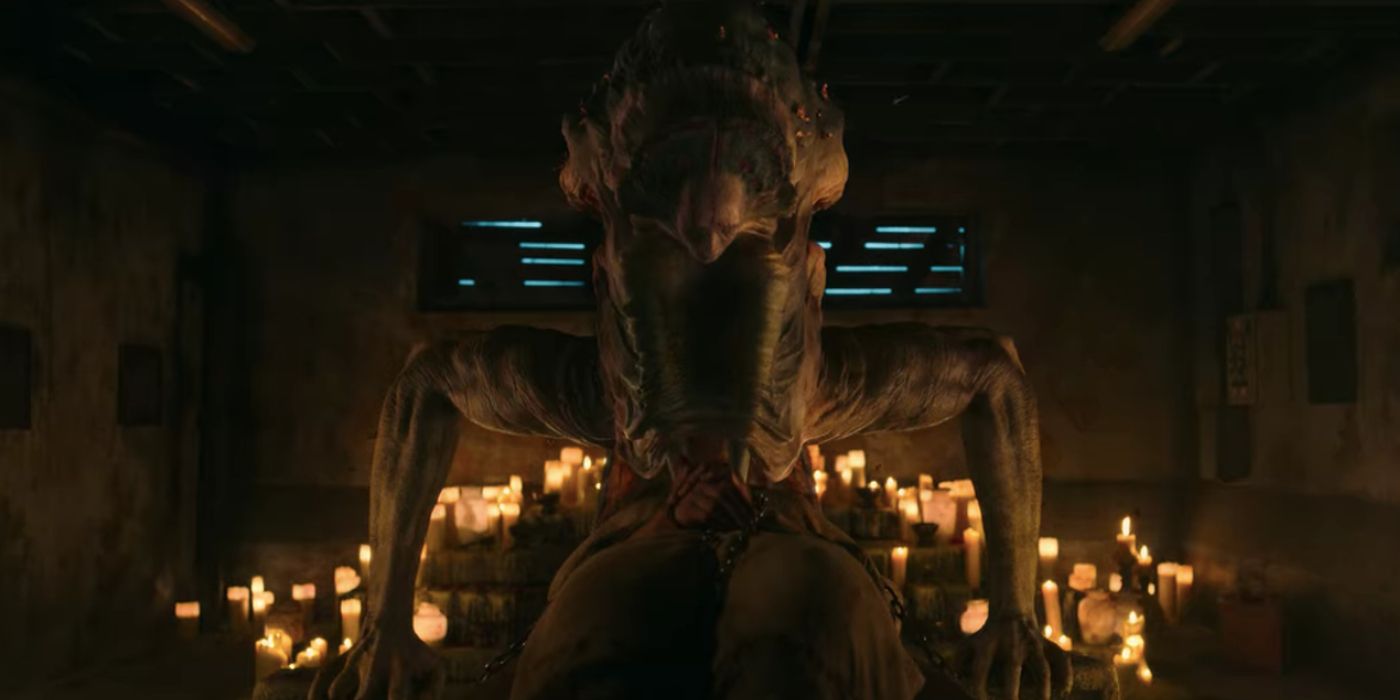
The novel’s monster, referred to as Black Maggie, is an ancient eldritch evil that feeds off desperate, poor inhabitants of the house. Throughout the book, it is heavily implied that Stephanie’s landlord Knacker McGuire and his seedy cousin are pimps prostituting other inhabitants of the house and selling them into human trafficking, but this later transpires to be a red herring as the novel reveals that the duo has been sacrificing these women to appease Black Maggie. In terms of an origin story, it is vaguely implied that the demonic Black Maggie has a connection to fertility goddesses of yore, but mostly the Lovecraftian horror antagonist serves as an embodiment of the way vulnerable laborers have been exploited by the country for generations – hence the fact that the monster has always existed in the house.
In contrast, the surreal monster seen at the end of Netflix’s No One Gets Out Alive is nowhere near as humanized. Instead, it is a nameless, long-limbed mash-up of a giant spider, a giant moth, and a grotesquely overgrown human, born from an ancient stone box stolen by the villain’s father. This surreal beast lulls its victims into a false sense of security by trapping them in happy memories before chomping their heads clean off and can seemingly heal anyone inflicted with illness or injury if they provide the monster with sacrifices. However, while the Hellraiser-style box is a neat addition, the monster appearing to originate from South America confuses its metaphorical import (as the novel’s beast being part of the house's history made it an analogy for the country’s exploitation of the poor in the novel).
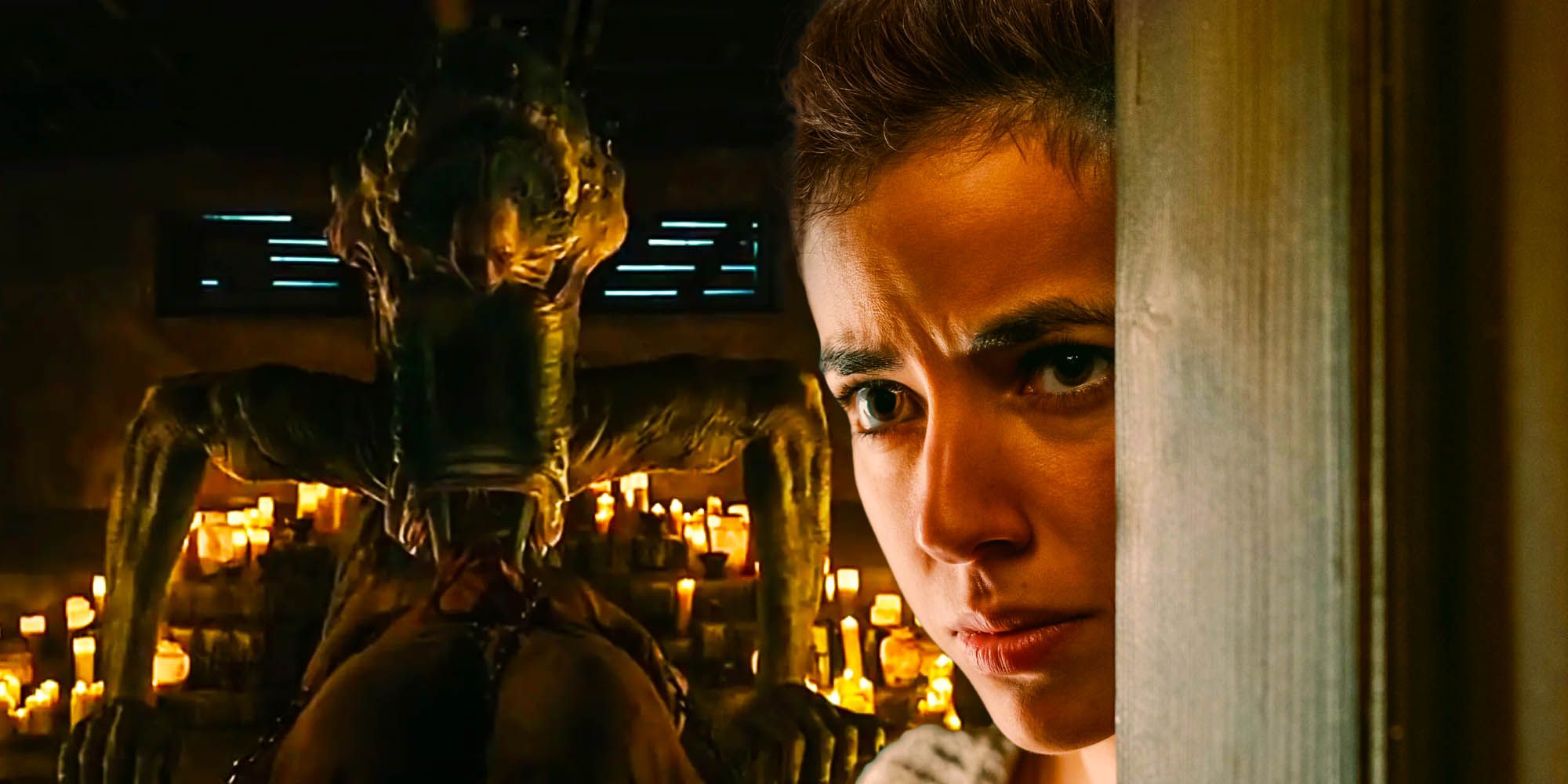
Unlike its adaptation, the novel ending of No One Gets Out Alive is oddly structured. Stephanie confronts her landlords, is forced into a life or death struggle, and overpowers both, killing them in the process – and there’s still a quarter of the weighty tome left. In the final sections of the novel, she sells her story to the press (understandably eliding the parts about Black Maggie) and can afford a handsome mansion. However, she still struggles to sleep and fears the ageless horror will eventually catch up with her one lonely night, which it does, prompting Stephanie to defeat the evil once and for all. Netflix’s No One Gets Out Alive ending is understandably compressed and truncated, with Ambar killing one creepy landlord and sacrificing the other to the monster in the basement, only to find her wounds healed by this sacrifice. This leads the heroine to reconsider leaving the house behind as the allure of feeding the monster calls to her, and the movie version of No One Gets Out Alive ends ambiguously without viewers knowing whether she gave into temptation and fed the beast again.
https://ift.tt/3FrRhzN
October 04, 2021 at 11:50PM
Labels: ScreenRant - Feed


0 Comments:
Post a Comment
Subscribe to Post Comments [Atom]
<< Home